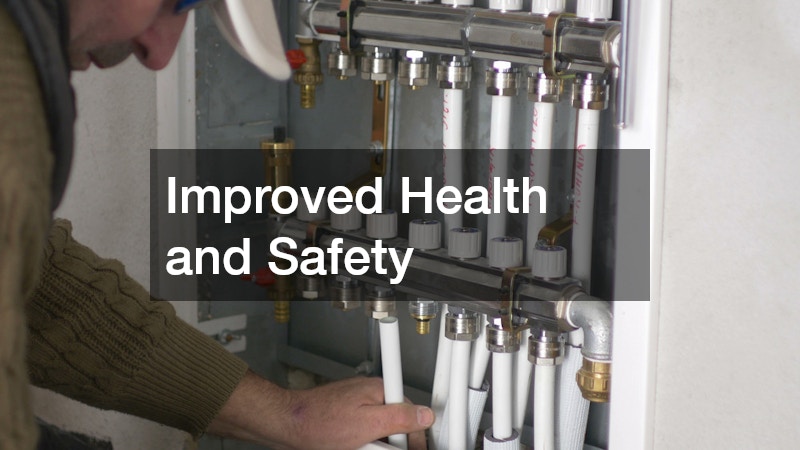What Is Grease Trap Testing and Why Does It Matter?
In this article, we explore the world of grease trap testing, shedding light on its significance and addressing common questions and concerns surrounding the process. Understanding how grease trap testing works and why it is crucial can aid businesses and individuals in maintaining an efficient and environmentally friendly waste management system. The intricate processes and regulatory requirements surrounding grease trap testing make it an essential topic for those committed to sustainable practices.
The Importance of Grease Trap Testing
Environmental Impact
Proper grease trap testing plays a pivotal role in preventing harmful waste from entering our ecosystem. By precisely measuring grease levels and identifying potential blockages, testing helps protect natural resources and wildlife from pollutants.
Over time, unchecked grease accumulation can result in catastrophic ecological damage, making regular testing an environmentally responsible practice.
Grease can be a dangerous pollutant, seeping into water bodies and affecting aquatic life negatively. Testing ensures that grease traps are maintained correctly, thus preventing such contamination. As the world becomes more environmentally conscious, the demand for sustainable waste management solutions continues to rise, putting grease trap testing in the spotlight.
Beyond immediate environmental effects, the long-term implications of neglected grease traps can result in significant harm to ecological systems. Consistent testing and maintenance ensure that natural habitats remain safe for future generations. Businesses and individuals can contribute to these efforts by incorporating routine grease trap testing into their operations.
Regulatory Compliance
Grease trap testing is critical for meeting local, state, and federal regulations designed to reduce pollution and ensure public safety. Many jurisdictions have imposed strict guidelines concerning waste management, particularly in the food service industry. Failure to adhere to these regulations can result in hefty fines, legal repercussions, or even business closures.
The regulatory landscape surrounding grease management is continually evolving, necessitating vigilance and adaptation from business owners. Grease trap testing provides documentation and evidence of compliance, mitigating the risk of penalties. Furthermore, staying compliant demonstrates a commitment to public welfare and environmental stewardship, enhancing a business’s reputation.
Authorities base their regulations on the understanding that improper grease disposal can have far-reaching consequences for community infrastructure. Regular testing prevents grease from disrupting sewage systems, thereby aligning with municipal codes. By proactively engaging in grease trap testing, businesses foster a culture of compliance and responsibility.
How Grease Trap Testing Works
Testing Procedures
The procedures involved in grease trap testing are meticulous, focusing on measuring grease levels and identifying contaminants. Technicians typically begin by inspecting the trap, assessing its size, and considering the facility’s waste output. Using measurement tools, they collect samples to determine the concentration of fats, oils, and grease (FOG) present.
Beyond sample collection, testing procedures include evaluating the structural integrity of the trap and ensuring its components function correctly. This comprehensive approach allows technicians to identify potential issues before they escalate, reducing costly repairs. Detailed reports are generated from testing data, offering insights into the trap’s performance and providing recommendations for maintenance.
Each step in the testing process is critical, ensuring that all variables are accounted for and that the system operates efficiently. The complexity of this procedure underscores the importance of professional involvement, as trained technicians are equipped to handle the nuanced demands of grease trap testing. Reliable results from these processes form the basis of informed decision-making in waste management strategies.
Tools and Technologies
Advancements in tools and technologies have revolutionized grease trap testing, offering more precise and efficient results. Modern devices, such as electronic grease monitors, provide real-time data on grease levels, allowing for immediate intervention if necessary. These technologies minimize human error and enhance the reliability of testing outcomes.
Innovative analytical techniques, such as gas chromatography, are increasingly employed to identify complex fats and oils in samples. Such sophisticated methods ensure thorough analysis, helping to pinpoint specific contaminants accurately. By staying abreast of technological advancements, businesses can employ the most effective tools in their grease management efforts.
The integration of sensors and automated systems also contributes to improved testing efficiency, streamlining workflows, and reducing manual labor. With these technologies, businesses can maintain optimal grease trap performance, fostering sustainability. Embracing technological innovation not only supports compliance but also positions businesses as leaders in modern waste management.
The Benefits of Regular Grease Trap Testing
Cost Savings
Regular grease trap testing can lead to significant cost savings by optimizing system efficiency and reducing maintenance expenses. Predictive maintenance based on testing results helps prevent breakdowns and costly repairs, ensuring that systems run smoothly. Efficient grease trap functioning also reduces utility bills by minimizing waste processing and disposal costs.
Furthermore, avoiding fines associated with regulatory non-compliance is a substantial financial incentive for routine testing. Investing in regular testing is economically sensible, as it translates to reduced operational disruptions and enhanced profitability. The financial benefits of testing, therefore, extend beyond immediate savings, contributing to long-term fiscal health.
Improved Health and Safety
Maintaining a well-tested and functioning grease trap system significantly enhances health and safety conditions within facilities. By trapping and preventing waste from clogging pipes, systems reduce the risk of unpleasant odors and potential infestations. Such preventative measures create a safer, more pleasant working environment for employees and patrons alike.
Regular testing ensures that harmful contaminants do not accumulate and exacerbate health risks. Employees are safeguarded from exposure to hazardous materials, promoting a healthy workforce. Moreover, visitors and customers benefit from clean, hygienic establishments that prioritize their well-being.
Grease trap testing is a critical component in waste management that protects the environment, ensures regulatory compliance, and enhances operational efficiency. Regular testing not only offers economic benefits but also plays a vital role in promoting health and safety. Understanding the significance and methods of grease trap testing empowers businesses to make informed decisions for a sustainable future.

